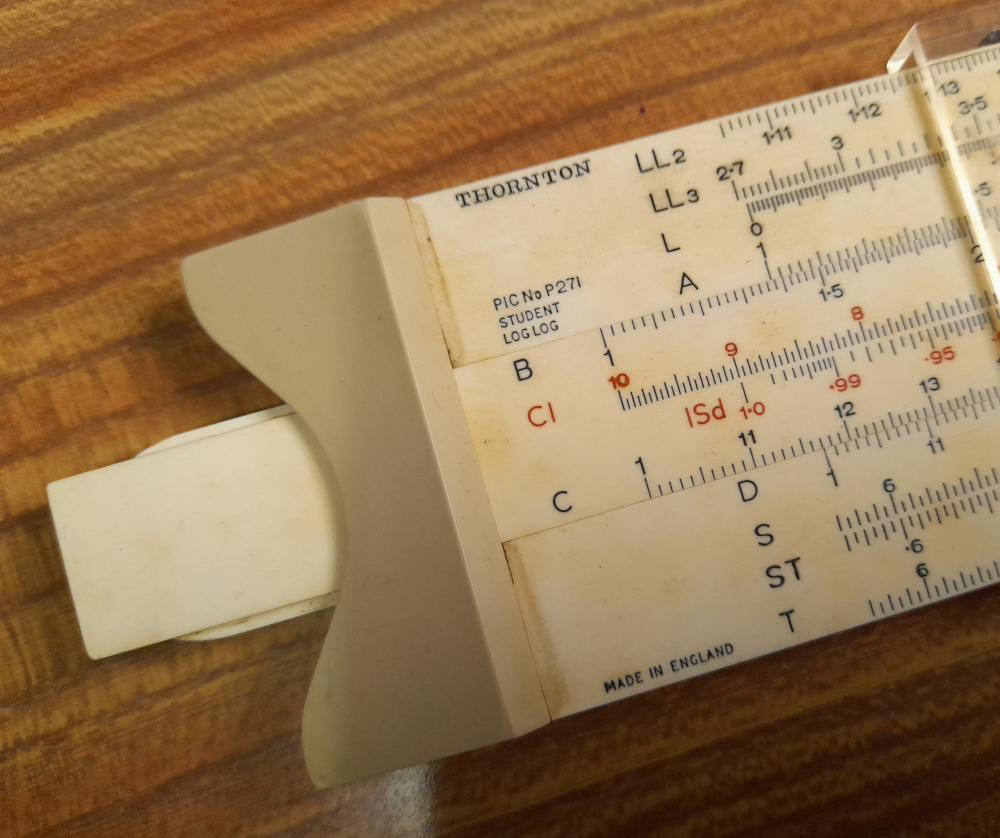The Paper Archives (part two)
More relics from the past
The previous post in this series is here.
Spending some more time going through the things The Parents should arguably have thrown out decades ago, I came across a leather bag, which seemed to have belonged to my father. Specifically, he seemed to have used it for going to college, in the 1970s. Him being him, he’d never properly cleaned it out, so it had accumulated all manner of things from all across the decade. There were “please explain your non-attendance” slips from 1972; an unread railway society magazine from 1977; and the most recent thing with a date on was an Open University exam paper from 1983. It was about relational database design, and to be honest some of the questions wouldn’t be out of place in a modern exam paper if you asked for the answers in SQL DDL rather than in CODASYL DDL, so I might come back to that and give it its own post. What he scored on the exam, I don’t know. There were coloured pencils, and an unopened packet of gum.

It seems to be from before the invention of the Best Before date, but the RRP printed on the side is £0.04.
Slightly more expensive: a rather nice slide rule. Look, it has a Standard Deviation scale and all. Naturally, my dad being my dad, it was still in its case and with the original instruction book, which will be useful if I ever try to work out how to use it.

And finally (for today) I spotted what appeared to be a slip of paper at the bottom of the bag with “NEWTON’S METHOD” written on it in small capitals, in fountain-pen ink. Had he been cheating in his exams? Had he written a crib to the Newton-Raphson method down and slipped it into the bottom of the bag? I pulled it out and…I was wrong.

It was a rolled-up 8-bit paper tape! Presumably with his attempt at a program to numerically solve a particular class of equation using Newton’s method.
I don’t know what type of machine it would have been written for, but I could see that it was likely binary data or text in some unfamiliar encoding, as whichever way around you look at it a good proportion of the high bits would be set so it was unlikely to be ASCII. Assuming I’m holding the tape the right way round, this is a transcription of the first thirty-two bytes…
0A 8D 44 4E C5 A0 35 B8 0A 8D 22 30 A0 59 42 A0 47 4E C9 44 C9 56 C9 44 22 A0 D4 4E C9 D2 50 A0
That’s clearly not ASCII. In fact, I think I know what it might: an 8080/Z80 binary. I recognise those repeated C9 bytes: that’s the opcode for the ret instruction, which has survived all the way through to the modern-day x64 instruction set. If I try to hand-disassemble those few bytes assuming it’s Z80 code we get:
ld a,(bc)
adc a,l
ld b,h
ld c,(hl)
push bc
and b
dec (hl)
cp b
ld a,(bc)
adc a,l
This isn’t the place to go into Z80 assembler syntax—that might be a topic for the future—other than to say that it reads left-to-right and brackets are a pointer dereference, so ld c,(hl) means “put the value in register c into the memory location whose address is in register hl. As valid code it doesn’t look too promising to my eyes—I didn’t even realise dec (hl) was something you could do—but I’ve never been any sort of assembly language expert. The “code” clearly does start off making assumptions about the state of the registers, but on some operating systems that would make sense. This disassembly only takes us as far as the repeated 0A8D, though: maybe that’s some sort of marker separating segments of the file, and the actual code is yet to come. The disassembly continues…
ld (&a030),hl
ld e,c
ld b,d
and b
ld b,a
ld c,(hl)
ret
ld b,h
ret
ld d,(hl)
ret
ld b,h
ld (&a0d4),hl
ld c,(hl)
ret
jp nc,(&a050)
Well, that sort of makes some sort of sense. The instructions that reference fixed addresses all appear to point to a consistent place in the address space. It also implies code and data is in the same address space, in the block starting around &a000 which means you’d expect that some of the binary wouldn’t make sense when decompiled. If this was some other arbitrary data, I’d expect references like that to be scattered around at random locations. As the label says this is an implementation of Newton’s method, we can probably assume that this is a college program that includes an implementation of some mathematical function, an implementation of its first derivative, and the Newton’s method code that calls the first two repeatedly to find a solution for the first. I wouldn’t expect it to be so sophisticated as to be able to operate on any arbitrary function, or to work out the derivative function itself.
If I could find jumps or calls pointing to the instructions after those ret opcodes, I’d be happier. Maybe, if I ever have too much time on my hands, I’ll try to decompile the whole thing.
The next post in this series is here

 Home
Home